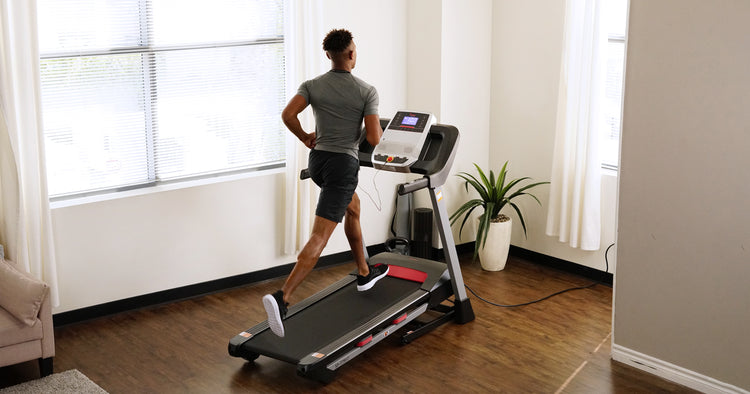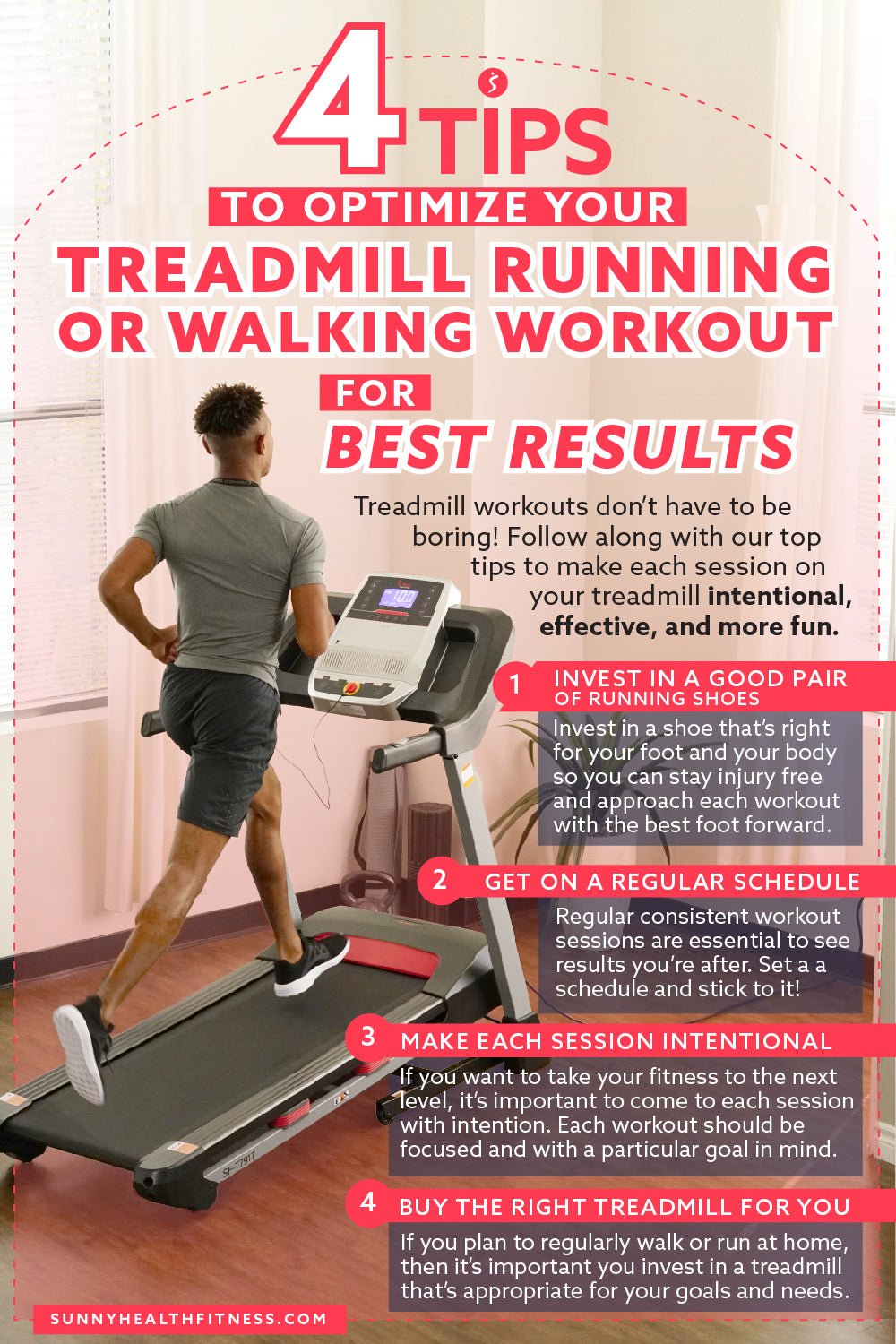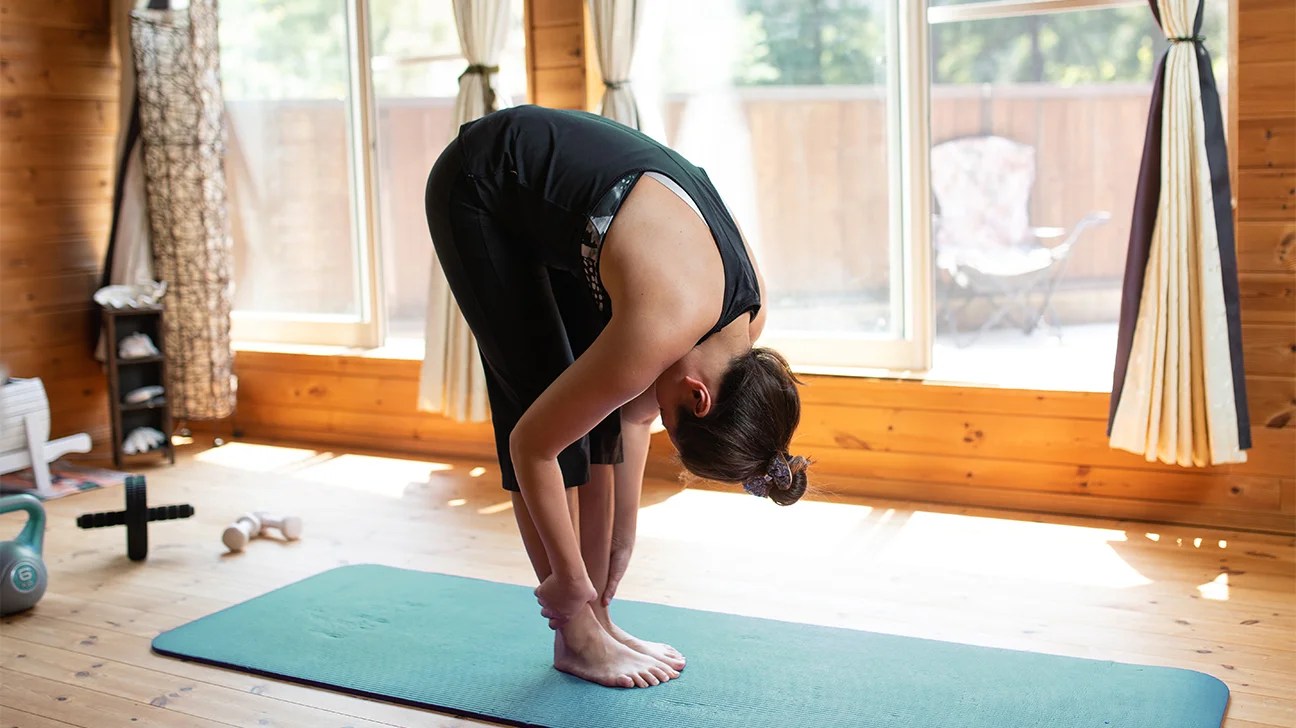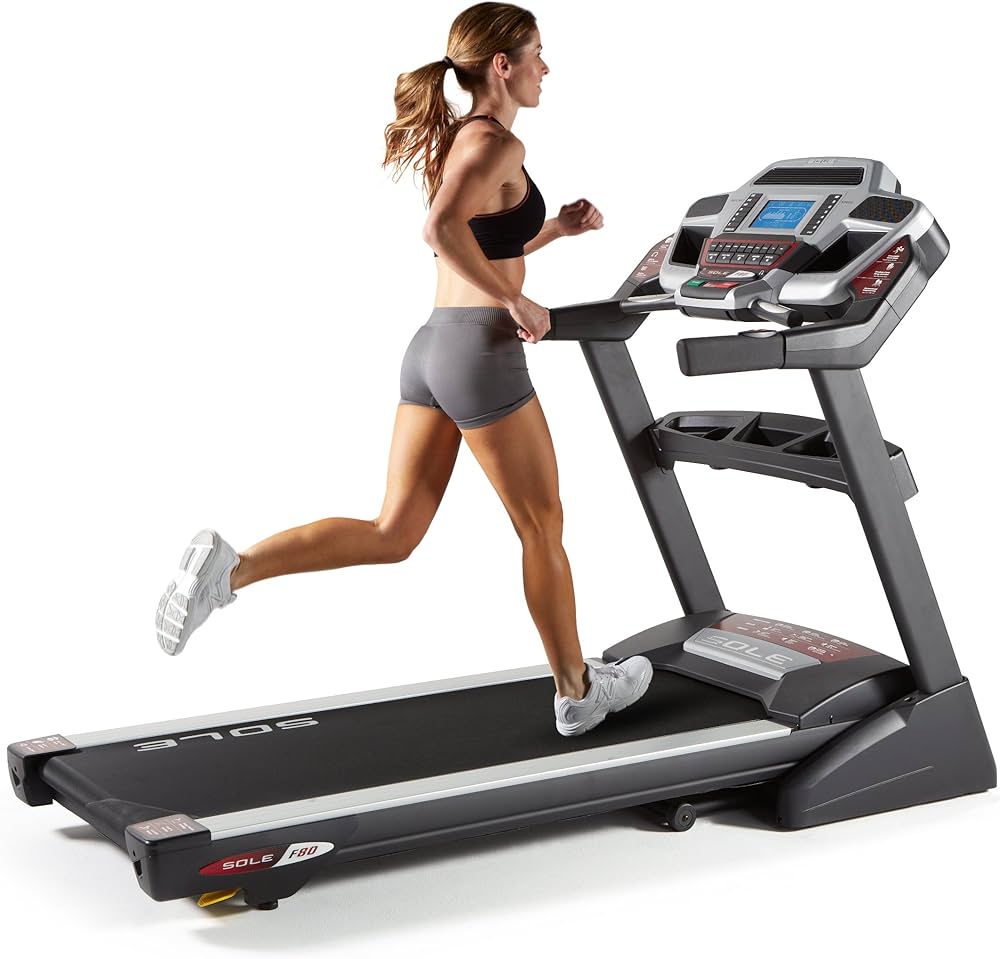Aim for at least 30 minutes of treadmill walking for effective cardio. This duration can help improve cardiovascular health.
Walking on a treadmill is a convenient way to achieve your daily cardio goals, particularly when outdoor conditions are less than ideal. Regular cardio exercise, such as treadmill walking, is essential for maintaining a healthy heart and lungs. It increases endurance, promotes weight loss, and improves overall fitness.
Treadmill workouts offer the flexibility to adjust intensity and incline, making it suitable for all fitness levels. Beginners might start with shorter durations and gradually increase, while seasoned fitness enthusiasts use longer sessions to maintain or enhance their cardiovascular health. Integrating treadmill walks into your routine can also relieve stress, boost mood, and improve sleep.

Credit: www.amazon.com
Walk To Your Health: The Benefits Of Treadmill Cardio
Embracing treadmill workouts can be a game changer for your fitness journey. Treadmills offer a controlled environment, making it easier to track progress. They provide a consistent surface, preventing the potential pitfalls of outdoor terrain. A solid cardio session on a treadmill can tailor to your personal health goals.
Boosting Heart Health
Exercise on a treadmill strengthens the heart. This form of cardio increases blood flow and decreases heart-related risks. Regular sessions contribute to a healthier blood pressure and a lower resting heart rate.
- Improves circulation
- Reduces risks of heart disease
- Helps control cholesterol levels
Calories And Fat Burning
Walking on a treadmill burns calories, aiding in weight management. Through consistent workouts, body fat reduces. Your metabolic rate can also spike, resulting in more calories burned throughout the day.
| Duration (Minutes) | Calories Burned (Approx.) |
|---|---|
| 30 | 150-200 |
| 45 | 225-300 |
| 60 | 300-400 |
Note: Actual calories burned vary based on individual factors.

Credit: sunnyhealthfitness.com
Finding The Sweet Spot: Ideal Treadmill Times
Finding the right amount of time to walk on a treadmill can be a game-changer for your cardio routine. This isn’t a one-size-fits-all answer. Your ideal treadmill time will vary based on various factors.
General Recommendations
The American Heart Association suggests at least 150 minutes of moderate-intensity exercise weekly. That means a brisk treadmill walk of 30 minutes a day, five days a week meets these criteria. For those who prefer more intense sessions, 75 minutes of vigorous exercise per week is also beneficial. However, always remember to start slowly if you are new to exercising, gradually increasing the duration as your stamina builds.
- Beginners: Start with 15–20 minutes per session
- Intermediate: Aim for 25–30 minutes per session
- Advanced: Challenge with 30–60 minutes or more per session
Personal Fitness Goals
Your personal fitness goals play a major role in determining your ideal treadmill time. Those focusing on weight loss might aim for longer sessions at a moderate pace. Conversely, people looking to improve cardiovascular health might focus on high-intensity interval training (HIIT) for shorter durations.
| Goal | Activity | Duration |
|---|---|---|
| Weight Loss | Moderate Intensity | 30-60 minutes |
| Endurance | Low Intensity | 40-60 minutes |
| Cardio Health | HIIT | 20-30 minutes |
Remember to listen to your body and adjust accordingly. If you feel pain or excessive discomfort, it’s time to slow down or take a break. On the flip side, if you feel you can handle more, gradually increase your duration or intensity.
Intensity Matters: Speed And Incline Variables
When it’s time to walk on your treadmill, the key to effective cardio isn’t just duration. The intensity of your workout also plays a critical role. By adjusting the speed and incline, you can significantly affect the heart rate and calorie burn. Let’s dive into how you can vary these elements for a cardio session that packs a punch.
Adjusting Your Pace
Finding the right speed balances challenge and safety. Beginners often start at a walking pace of 1 to 2 mph, while brisk walkers may aim for 3 to 4 mph. Listen to your body’s signals and increase the speed gradually. Here’s a quick guide:
- Warm-up: 5 minutes at a comfortable pace.
- Main Workout: 20 to 30 minutes, incrementally raising speed.
- Cool down: 5 minutes, slowing down to your starting pace.
Leverage The Power Of Incline
Adding an incline intensifies your workout without needing speed hikes. It simulates hills and can skyrocket calorie burn. Start with a 1% incline and slowly work up to what feels challenging. Consider this:
| Incline Level | Duration | Focus Area |
|---|---|---|
| 1% – 2% | 5 Minutes | Burn more calories than flat walking |
| 3% – 5% | 5-10 Minutes | Boost cardiovascular effort |
| 6% and above | Varies | Simulate uphill climbs, increase endurance |
Remember to adjust incline gradually to prevent strain. Lower the incline if you feel discomfort.
Making It Count: Structuring Your Workout
Finding the sweet spot for your cardio workout on a treadmill involves more than just time. It’s about choosing the right type of exercise to get your heart rate up and burn calories efficiently. Below, explore the best ways to structure your treadmill routine to maximize cardio benefits.
Interval Training On Treadmill
Interval training is a powerhouse for cardio fitness. It mixes bursts of high-intensity with low-intensity recovery periods. This type of workout can help you burn more calories in less time. Here’s a simple way to start:
- Warm-up: Walk at a moderate pace for 5 minutes.
- High-intensity: Run or walk fast for 1 minute.
- Recovery: Slow down for 1 to 2 minutes.
- Repeat: Do 8-10 cycles of high-intensity and recovery.
- Cool down: A 5-minute gentle walk to finish.
Customize your intervals based on your fitness level. With time, reduce recovery durations, or increase intensity durations.
Consistency And Variation
For optimal results, mix consistency with variation. A consistent workout schedule builds endurance and strength over time. Aim for 3-4 treadmill sessions each week. Yet, your body needs variety to improve. Changing your workout prevents plateaus. This could be increasing speed, incline, or the length of your workout session. Remember, every step counts, and keeping your treadmill workouts fresh and challenging is the key.
| Week | Speed Increase | Incline | Duration |
|---|---|---|---|
| 1-2 | 0.5 mph | 1% | 30 min |
| 3-4 | 0.5 mph | 2% | 35 min |
| 5-6 | 1 mph | 2% | 40 min |
Listen To Your Body: Safety And Limitations
Embarking on a cardio journey with your treadmill is thrilling. But it’s crucial to recognize your body’s signals. Pushing too hard or not enough can impact your health and fitness goals. Understand how to tread that fine line with the right awareness.
Identifying Physical Signs
Being attuned to how you feel during exercise is vital. Your body offers clear signs when something is amiss. Look out for these indicators:
- Shortness of breath: Breathing should be challenging but not unbearable.
- Dizziness: This could signal overexertion or dehydration.
- Pain or discomfort: Pay attention to any sharp or persistent pain.
- Excessive fatigue: Feeling worn out after a session is expected, but crashing is a red flag.
Adjust your pace if you notice any of these signs. Safety is paramount above all else.
Preventing Overexertion
It’s tempting to go all-in when starting out, but overdoing it can lead to injuries. To prevent overexertion:
| Tip | Description |
|---|---|
| Start Slow | Ease into workouts with a gentle pace, gradually increasing intensity. |
| Hydrate | Drink water before, during, and after your walk. |
| Rest | Allow recovery time between workout sessions. |
| Listen | Prioritize your body’s feedback and adjust accordingly. |
Remember, your body’s response to exercise is the best guide. Reaching goals is important, but not at the cost of your well-being. Always choose a workout duration and intensity that aligns with your fitness level and health.
Beyond Time: Tracking Progress And Adaptation
Walking on a treadmill is a popular cardio workout. But effectiveness isn’t just about duration. It’s essential to monitor your progress and adapt your routine for better results. With the right tools and knowledge, you can maximize the benefits of your treadmill sessions.
Using Wearable Tech
Modern technology offers amazing tools to track fitness progress. Wearable devices can give you valuable insights. They measure heart rate, steps, and calories burned. You can set goals and watch your improvements over time. Look for features that suit your needs. A good device will keep you motivated and informed. Some popular options include:
- Smartwatches: Offer comprehensive fitness tracking
- Heart Rate Monitors: Focus on cardiovascular performance
- Step Counters: Simple but effective for tracking movement
When To Increase Workout Duration
Knowing when to up your game is key for progression. Start with manageable sessions. Gradually increase as your fitness improves. Listen to your body for cues. If you find your current routine less challenging, it’s a sign to step it up. Here are clear indicators it’s time to increase the duration:
- Endurance Boost: You finish workouts without fatigue
- Faster Recovery: Your recovery time decreases
- Stalled Progress: You see no improvement over time
Remember, regular assessments are crucial. Use them to ensure your workouts stay effective and enjoyable. Keep pushing boundaries at a pace that’s right for you.

Credit: www.pinterest.com
Frequently Asked Questions On How Long Should I Walk On Treadmill For Cardio?
How Long Should I Do Cardio On Treadmill?
Aim for at least 30 minutes of treadmill cardio for general health. Gradually increase to 60 minutes for enhanced benefits. Adjust duration based on fitness goals and levels.
Is Walking On The Treadmill For 30 Minutes Good Cardio?
Walking on a treadmill for 30 minutes is an effective cardio workout. It helps increase heart rate, burns calories, and improves cardiovascular health.
How Long Should I Walk On My Treadmill To Lose Weight?
To effectively lose weight on a treadmill, aim for a daily walk of 30 to 60 minutes at a moderate pace. Consistent exercise, alongside a balanced diet, enhances weight loss results.
What Is The 30 Minute Treadmill Rule?
The 30-minute treadmill rule suggests users limit their treadmill workouts to 30 minutes when the gym is crowded, allowing others to use the equipment and maintain an efficient flow.
Conclusion
Determining the ideal treadmill time hinges on personal fitness goals and stamina. Aim for a session that challenges yet respects your limits, enhancing cardiovascular endurance over time. Gradually increase either speed or duration for continued improvement. Remember to consult a healthcare provider before embarking on a new exercise regimen.
Step forward confidently towards a healthier you with every walk.



